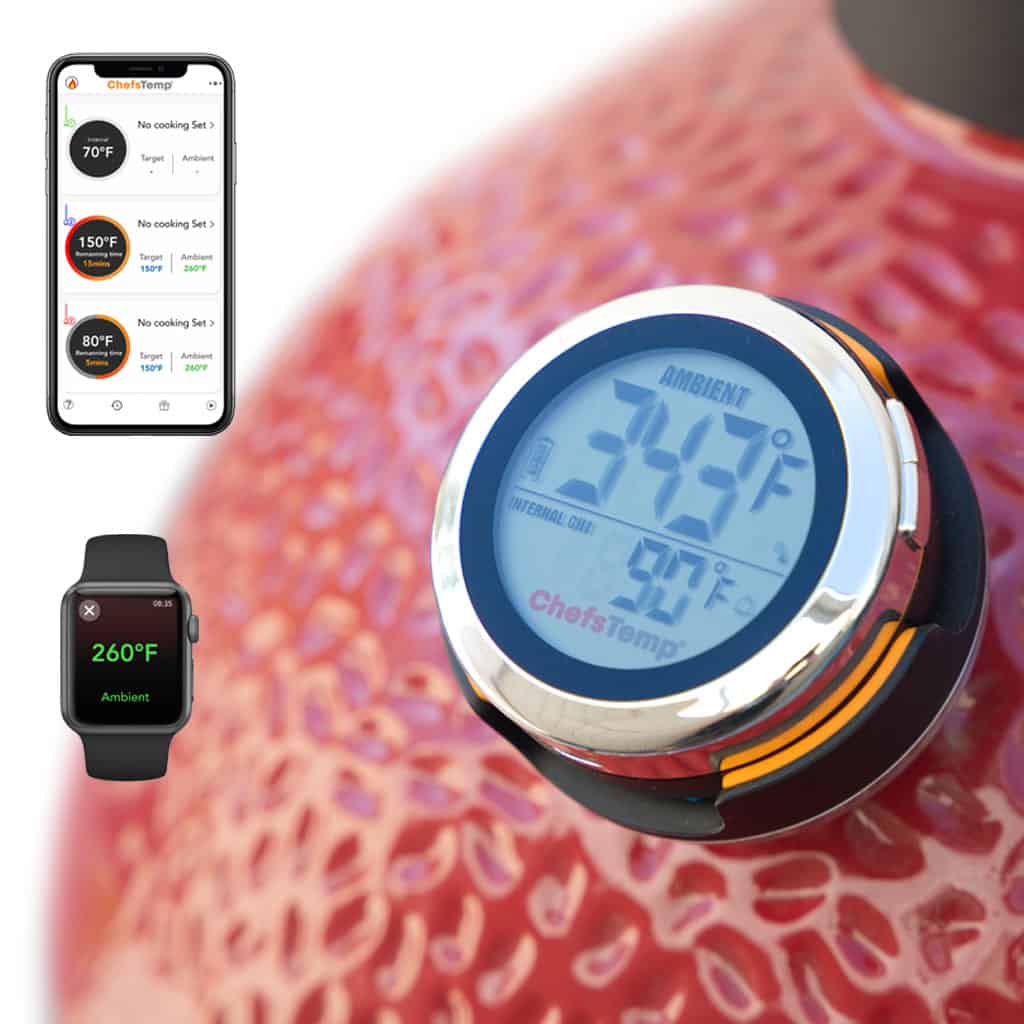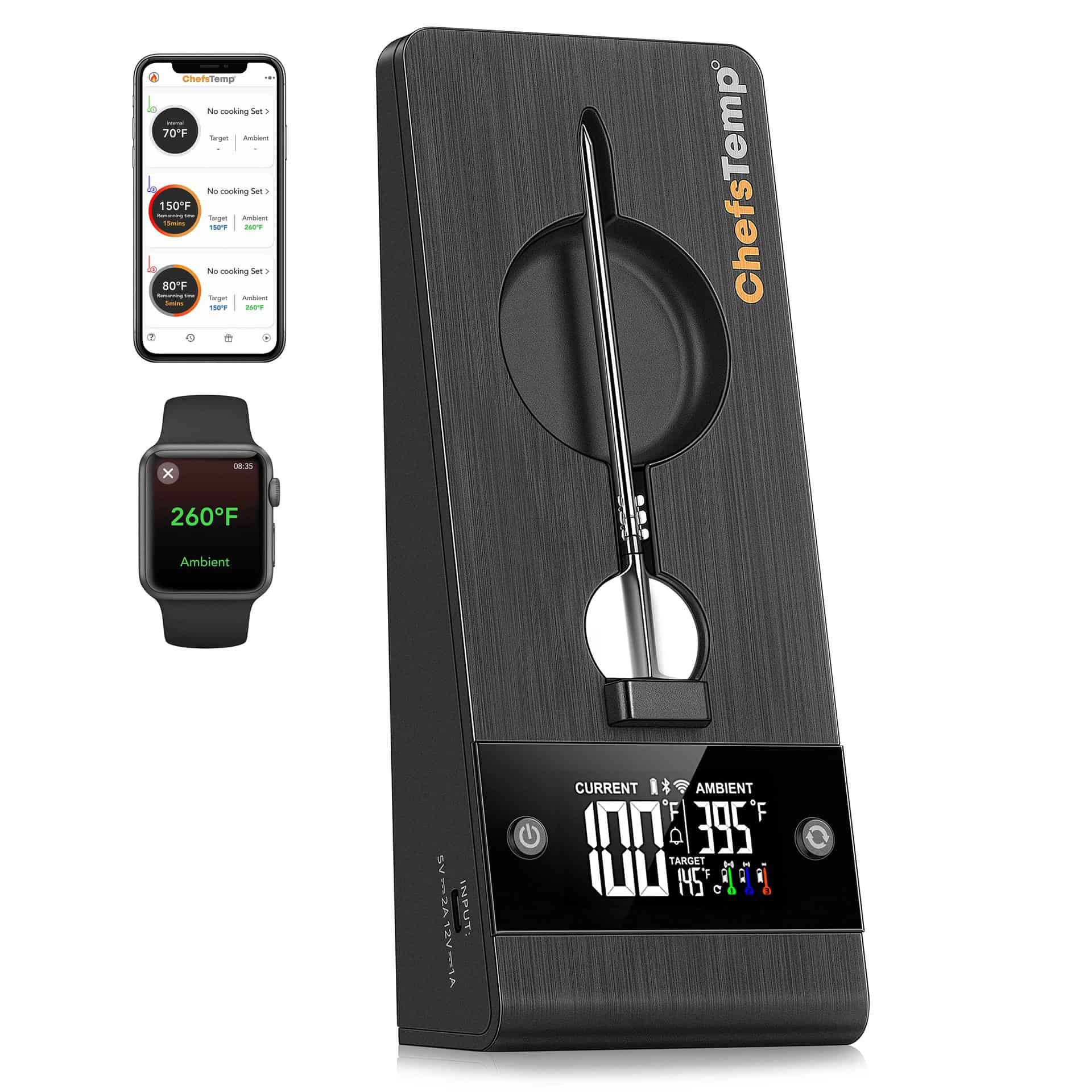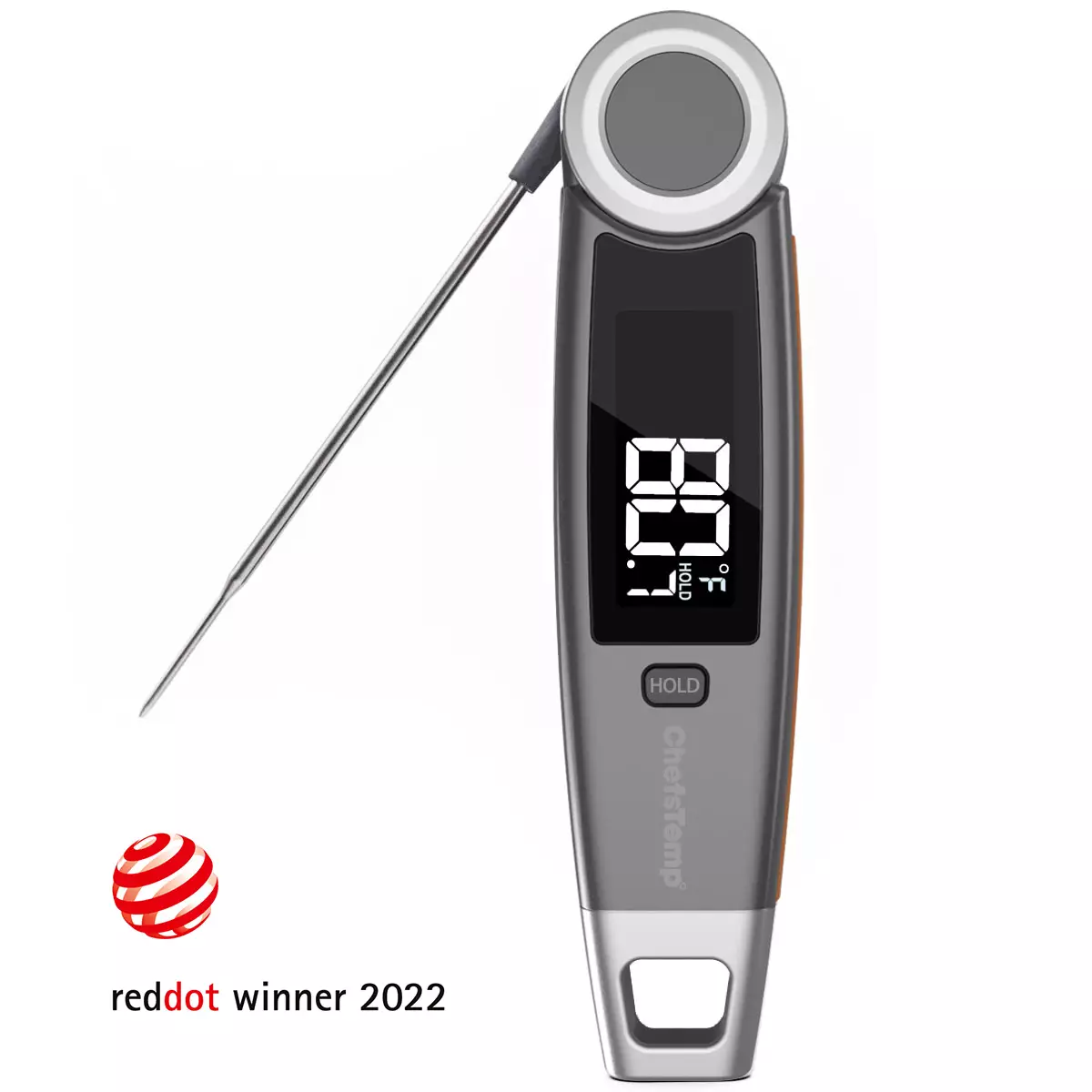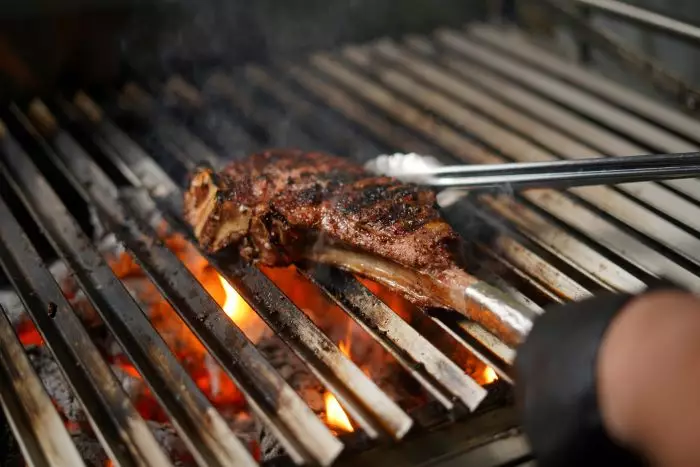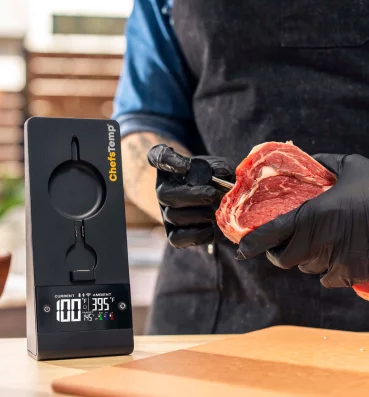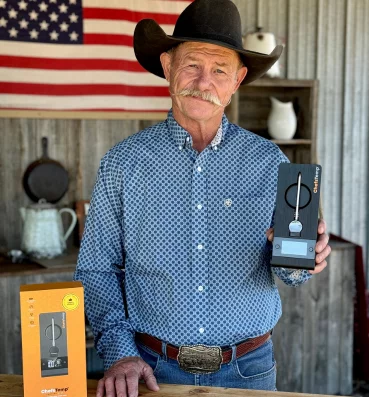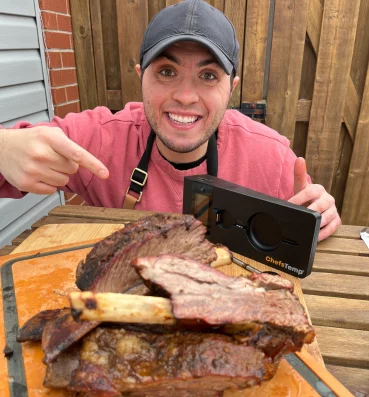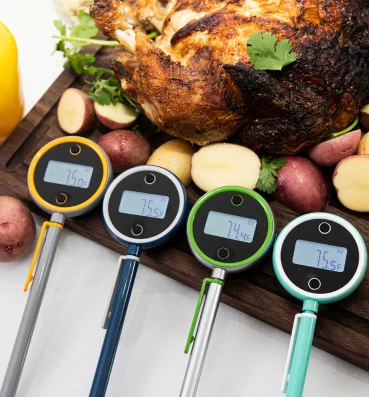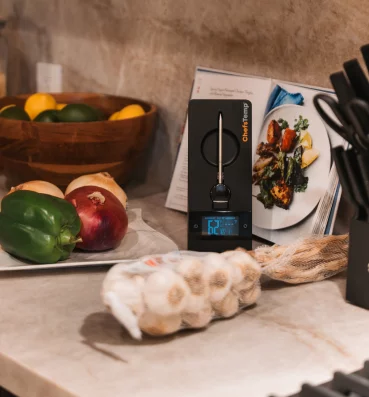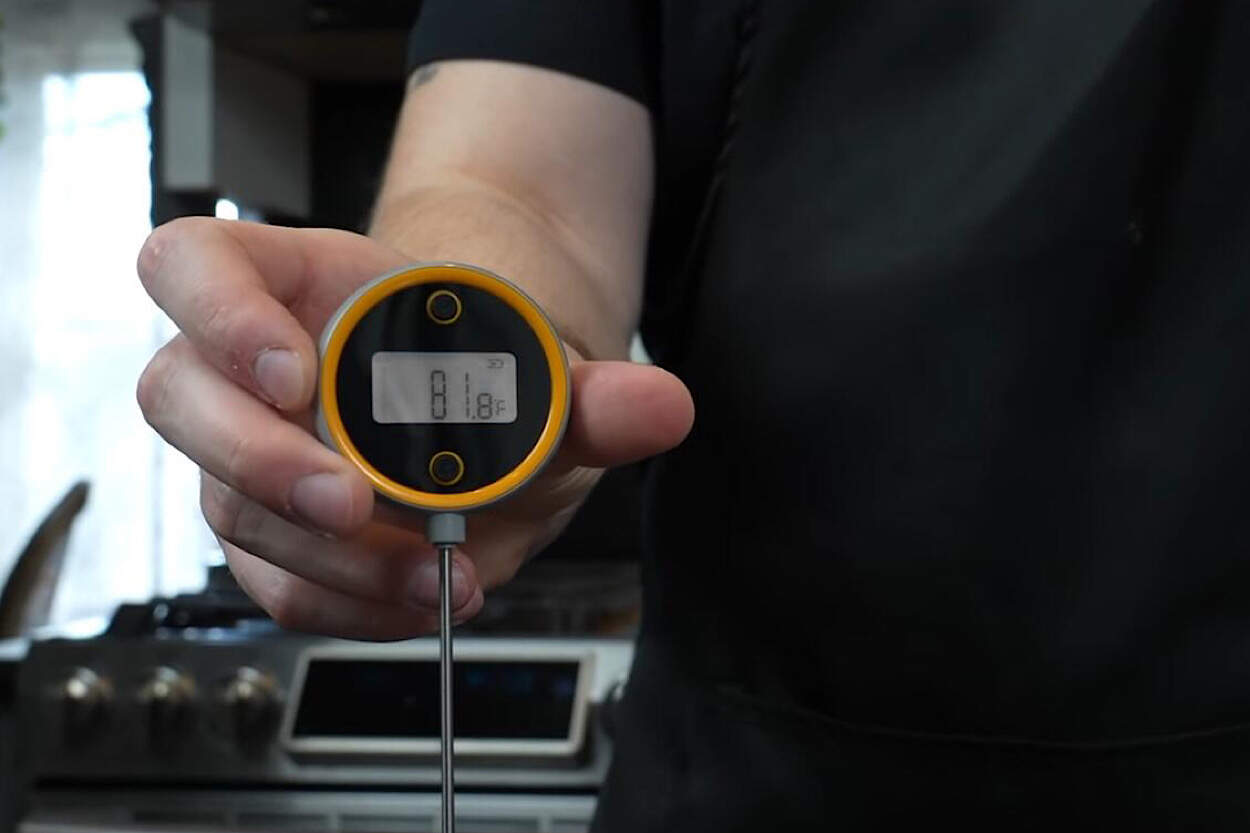
How Does a Digital Meat Thermometer Work?
A meat thermometer is the best way to guarantee that the meat is cooked properly and safely. It takes out the guesswork in cooking and demystifies the quest for that perfectly juicy and sumptuous meat. If you have a meat thermometer, you can basically throw away temperature charts, timers, and poke tests. The temperature reading is accurate and unwavering. If you are naturally curious, however, then you might be wondering how this seemingly simple tool can actually be so important and useful in the kitchen. So how does a meat thermometer work?
Table of Contents
Understanding meat thermometers: How does a meat thermometer work?
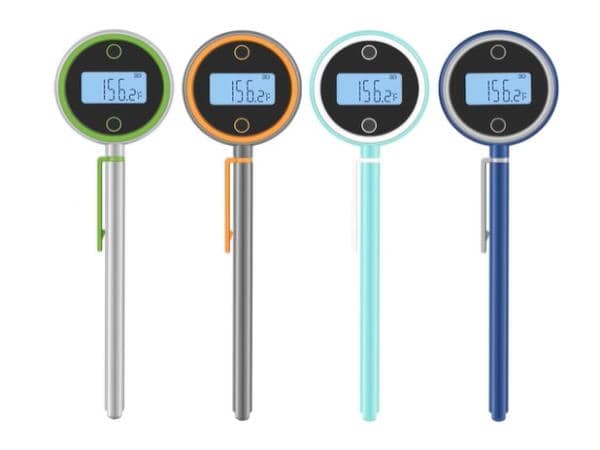
To understand how meat thermometers work, you need to understand how thermometers work in general. The word ‘thermo’ is actually a Greek word that means heat. The word ‘meter’, on the other hand, means measure. Thus, a thermometer measures heat.
Most thermometers are made with two important components – the sensor and the reader. Thermometers can measure the change in temperature and convert that change into a value that is easily understood. There are lots of different kinds of thermometers out there, from the bulb, electronic, to bimetallic thermometers. A meat thermometer, in particular, is a type of bimetallic thermometer.
A meat thermometer provides a reading based on the internal temperature of the meat. Whether it’s beef, lamb, or poultry, meat must reach a certain internal temperature to make sure it is safe for human consumption (heat kills most disease-causing food-borne pathogens within the meat). Most meat thermometers show temperatures ranging from 140°F (60°C) to around 200°F (93°C) .
Metals contract and expand at certain temperatures. This is why an old-school thermometer uses mercury housed inside a slim glass tube. The hotter the temperature, the more the mercury lengthens. This is the very principle behind meat thermometers.
With bimetallic thermometers, the rod of the thermometer, which is inserted into the meat to take temperature readings, is made of two different metals bonded together. One metal expands at a lower temperature, while the other must reach a higher temperature. The heat from the meat causes the strip of metal from the thermometer to bend or twist. The twisting of the metal triggers the dial, which then shows the readout on the display. When the metal is no longer in contact with the hot meat, it contracts and the dial winds down.
Understanding digital meat thermometers
Digital meat thermometers provide the most precise reading of the internal temperature of the meat. They are more accurate than analog and dial thermometers, and far more consistent than simply scrutinizing the meat’s color, juice color, texture, and tenderness, which is mostly subjective.
Digital meat thermometers are simply thermometers with digital displays. However, there are lots of different types of digital thermometers out there, and not all are created equally.
There are three basic types of digital meat thermometers:
- Thermocouples
- Thermistors
- Resistance Temperature Detectors (RTDS)
Thermocouple thermometers
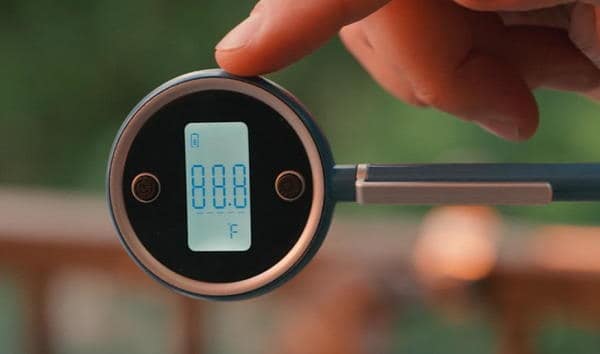
This type of digital meat thermometer provides the fastest and most accurate temperature reading. They also have the largest range, which can go up to 300°F (149°C).
Thermocouple thermometers have two tiny wires made with different metals welded at the tip. The most common combination is called Type K, which is made up of nickel and chromium. When these metals encounter heat, the metals produce an electrical voltage across them. This voltage is measured, which corresponds to a specific temperature, which is then displayed on the digital display of the thermometer.
The thermometer also comes with a small sensor, which measures thin meat cuts without leaving holes in the meat. This allows cooks to measure temperature at different parts of the meat cut.
This type of digital meat thermometer is used near the end of the estimated cooking time to check the temperature of the meat, rather than left in the meat.
The major drawback of this type is its hefty price tag.
Thermistor thermometers
Short for thermal resistors, thermistor thermometers measure how resistance to electrical flow changes with temperature. Most thermistor thermometers can read at around 260˚F (127°C) to 300˚F (149°C) .
This thermometer works by sending an electrical current through a wire in the probe (resistor tip). This tip is made with a ceramic semiconductor bonded with a temperature-sensitive epoxy. The meter then measures the voltage through the resistor.
The change in resistance of the thermistor is caused by the change in temperature that follows along with the expected formula (logarithmic curve), which is determined by the ceramic (a semiconductor). The electrical resistance being experienced is interpreted to calculate the temperature.
The link between the temperature and voltage is not a straight line. Thus, you will need a computer to calculate it.
Thermistor thermometers are usually cheaper than thermocouples. They are commonly used for leaving in a large roast. Many thermistors on the market today come with a metal probe that houses the thermistor itself. They are either connected to the readout via cable or through a wireless connection. This means you can monitor the temperature of your meat in your kitchen or patio, while it is being cooked inside the oven.
Note that, as with most thermometers out there, the accuracy of this digital meat thermometer largely depends on the quality of its components. Thermistor thermometers can be accurate if they’re well-made. Thus, expect cheaply made thermistor thermometers with cheap electronics to be inaccurate.
RTD thermometers
Resistance temperature detector thermometer also measures temperature from the change of electrical resistance. RTD thermometers are usually made with platinum, nickel, and copper.
Though they are usually slower giving out temperature readings, they have a wider range, making them a popular choice for industrial use. High-quality RTD thermometers can read up to 1220˚F (660°C) .
Also, RTD thermometers are less accurate than thermistors. Plus, though they have longer wires for convenience and functionality in the kitchen, the long-distance the data has to travel can affect the accuracy of the reading.
Due to their wide temperature range, RTD thermometers are usually used for industrial applications with extremely high temperatures.
Discover Other ChefsTemp Products
Discover more recipes and learn kitchen tricks by joining our cooking family on Facebook.
You may also like:
